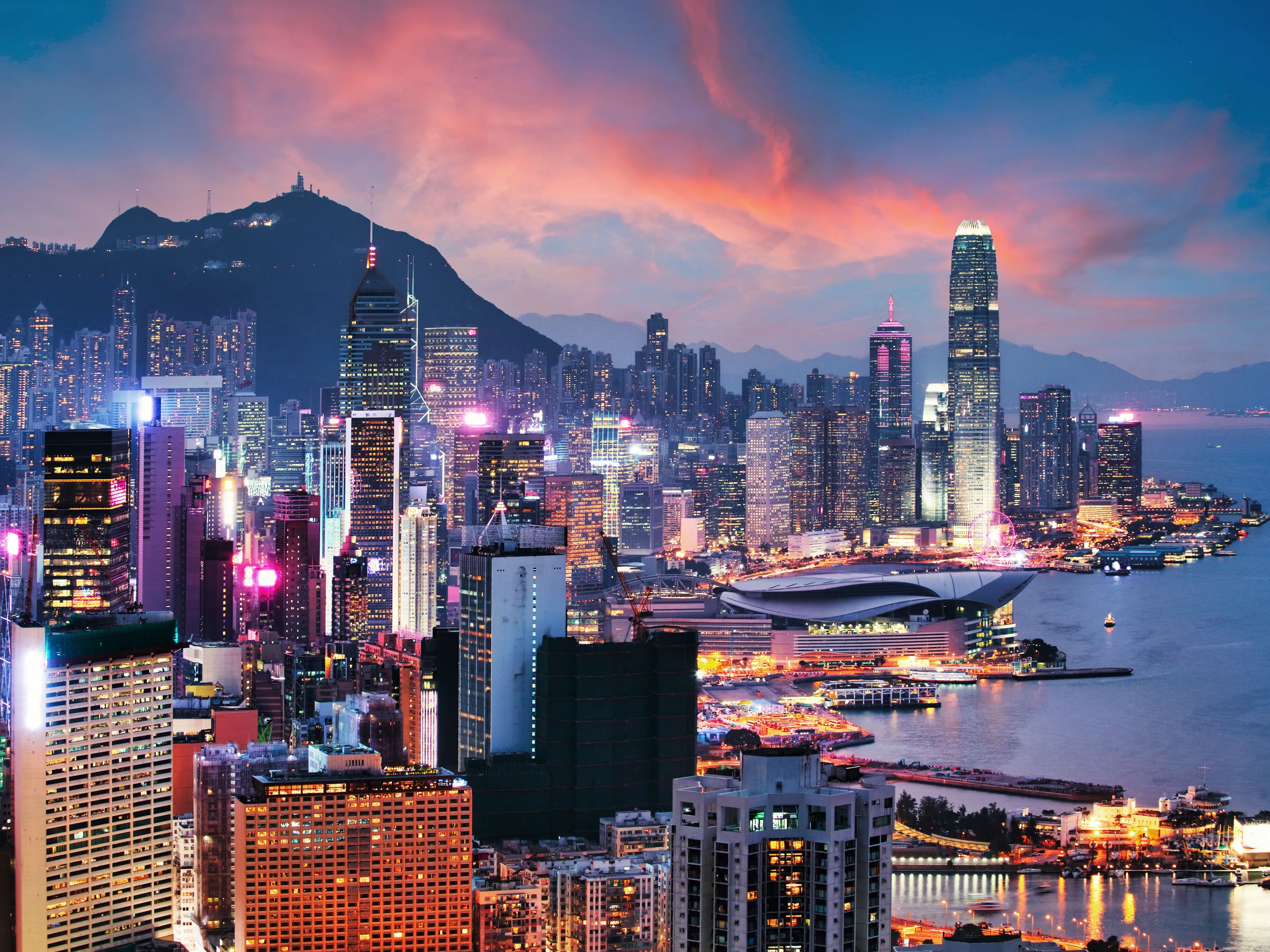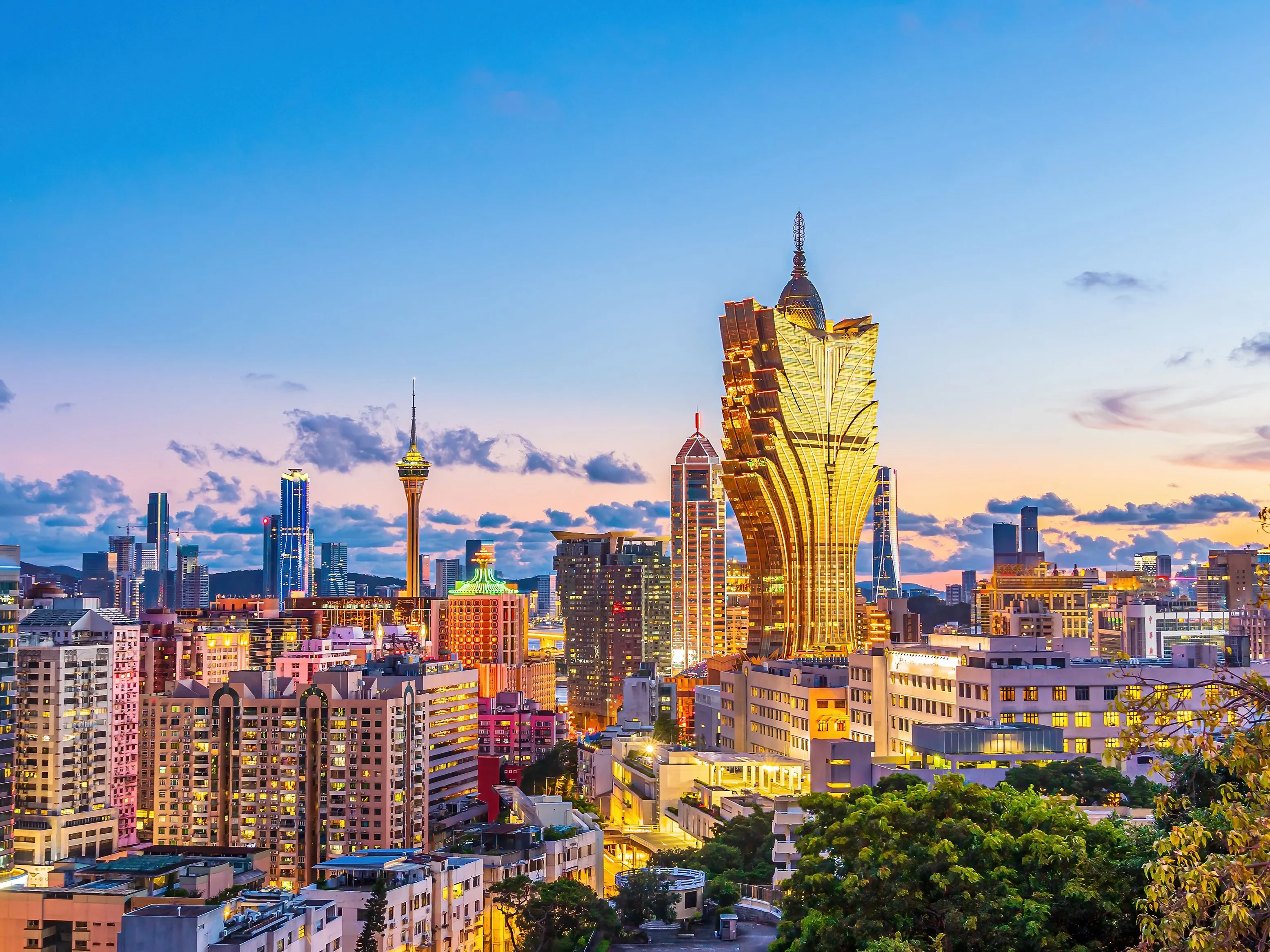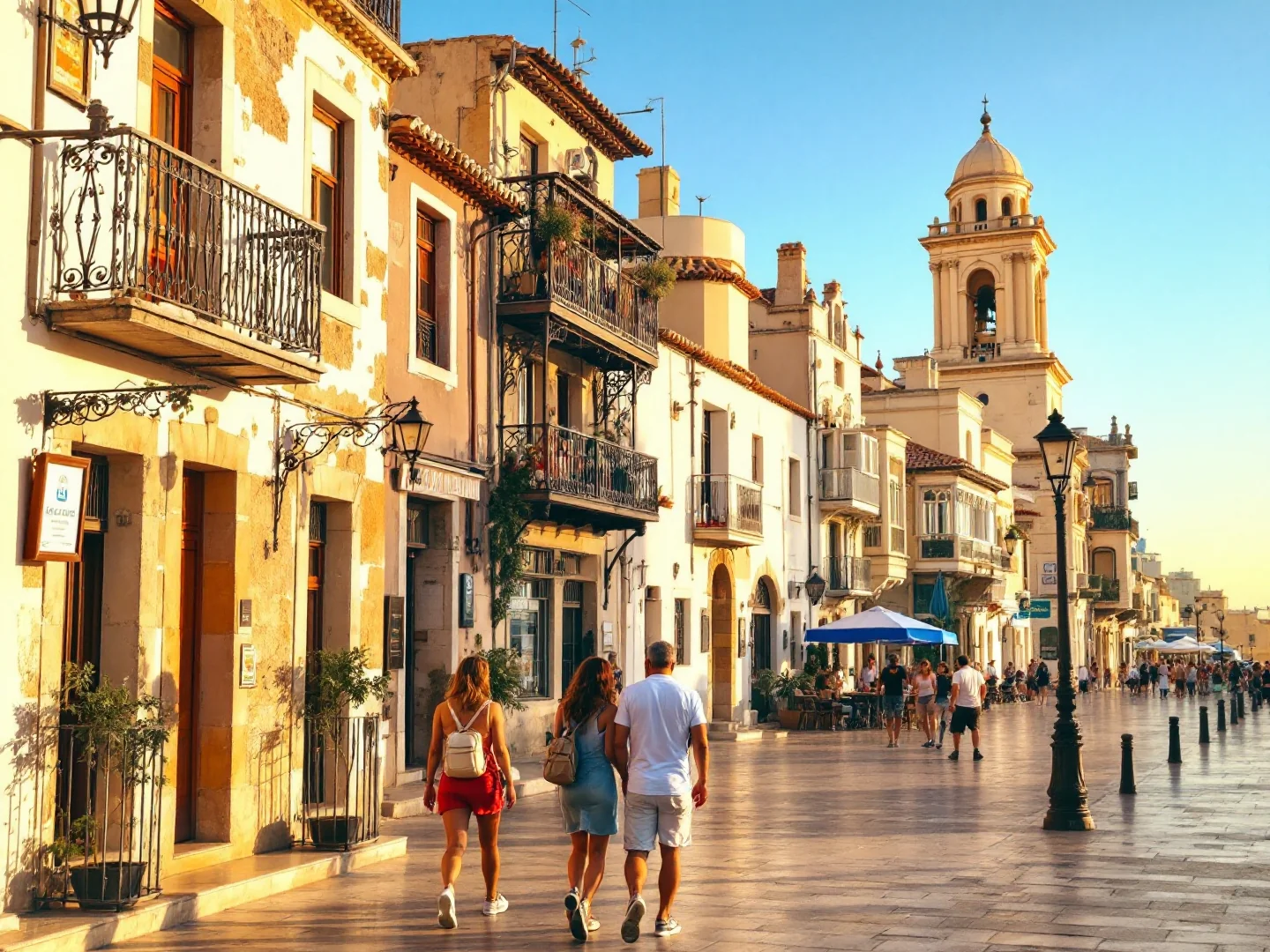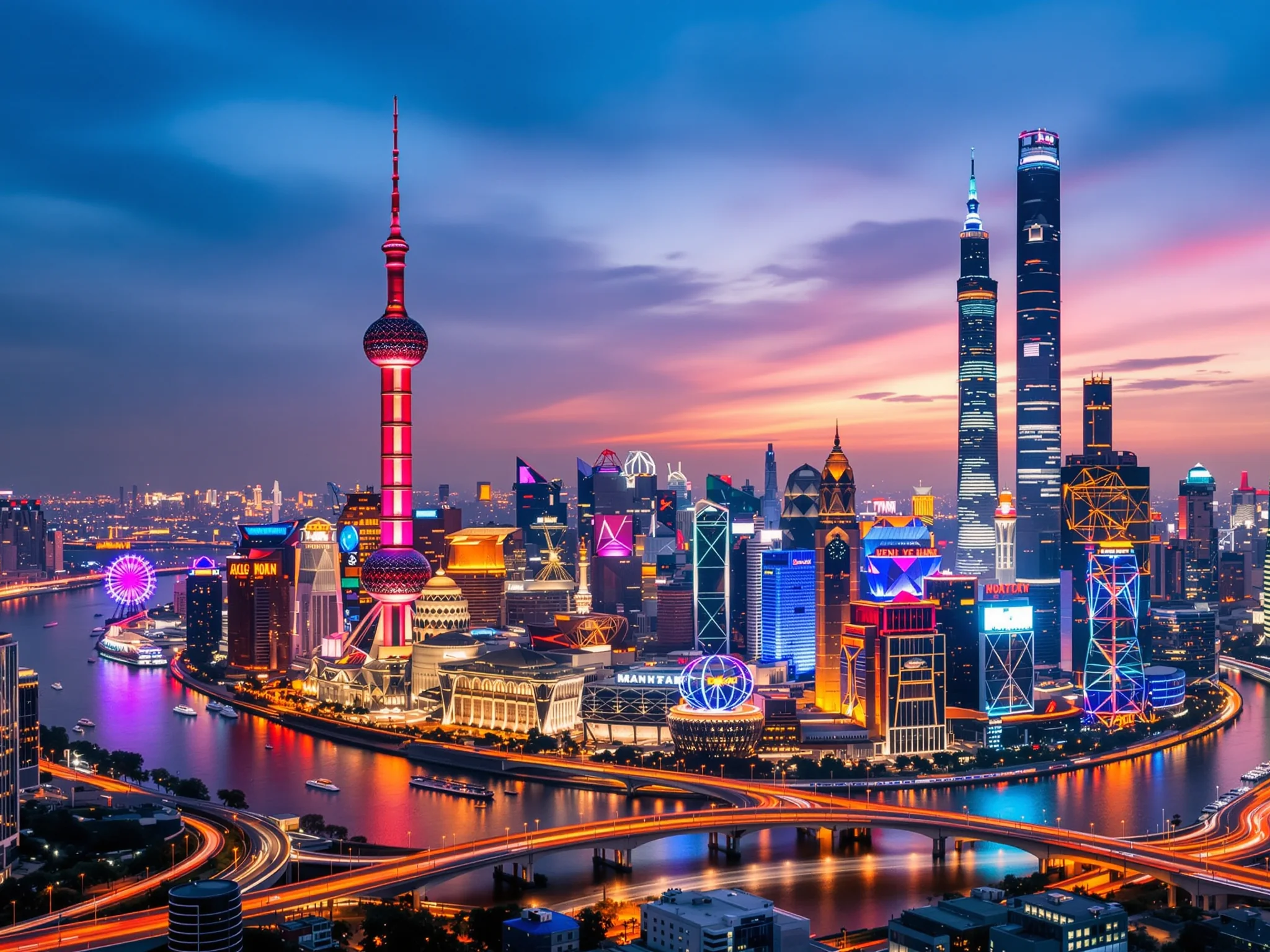Why Visit Taipei?
Taipei entices as Taiwan's dynamic capital where 508-meter Taipei 101 skyscraper punctuates skylines above night markets serving oyster omelets for NT$60 MRT trains whisk travelers efficiently between ornate temples burning incense, and mountain trails reach misty peaks minutes from urban energy. This modern yet traditional city (2.7 million in Taipei proper, 7 million Greater Taipei) balances tech-sector prosperity with deeply rooted Chinese, Japanese, and Indigenous cultures—smartphones scan QR codes at 7-Eleven (one every 200 meters), yet fortune tellers read palms at Longshan Temple while elderly practice tai chi in Daan Park's dawn hours. Taipei 101 dominated global skyline discussions until Burj Khalifa surpassed it—ascend the 89th floor observatory (NT$600/$19) for 360° views, or hike Elephant Mountain's 30-minute trail for free Taipei 101 photo ops at sunset.
Night markets define Taipei's soul: Shilin Night Market's endless stalls serve stinky tofu, bubble tea (invented here), beef noodle soup, and scallion pancakes; Raohe Street Market squeezes hawkers beneath temple lights; and Ningxia Night Market specializes in oyster omelets and taro balls. Yet beyond street food, Taipei surprises with world-class museums—National Palace Museum houses 700,000 Chinese imperial treasures including the jade cabbage and meat-shaped stone that draw crowds, while contemporary art thrives in renovated warehouses. Hot springs culture inherited from Japanese occupation bubbles in Beitou's sulfuric waters (30-min MRT), while day trips reach Jiufen's steep alleys inspiring Spirited Away (1 hour), Yehliu's otherworldly rock formations (1.5 hours), and Yangmingshan's volcanic landscapes.
Temples showcase religious diversity: Longshan Temple's ornate dragon columns attract Buddhist and Taoist worshippers, while Confucius Temple's austere elegance honors scholarly tradition. Food culture obsesses beyond night markets—Din Tai Fung's xiaolongbao soup dumplings achieved global fame, beef noodle soup competitions crown champions, and breakfast shops serve soy milk with youtiao fried dough. With efficient MRT ($20–$65 NT/$1–$2), affordable prices, friendly locals (many speak English), subtropical weather (hot summers, mild winters), and LGBTQ+-friendly culture, Taipei delivers Asian energy, culinary adventures, and natural beauty accessible by metro.
What to Do
Taipei Icons & Night Markets
Taipei 101 Observatory
Once the world's tallest building (2004-2010), this 508m skyscraper remains Taiwan's icon. Observatory on 89th floor (NT$600/$19 adult, pre-book online) features 360° views spanning Taipei basin to surrounding mountains—on clear days see north coast. The high-speed elevator ascends 89 floors in 37 seconds (former world record). Standard tickets cover the indoor 88th-89th floors; going up to the open-air 101st-floor 'Skyline 460' deck costs extra (currently about NT$380 more or NT$1,200 for a dedicated ticket), and is weather-dependent. Damper Baby exhibition on 88th floor explains the 660-ton tuned mass damper (yellow sphere visible from below) that stabilizes the building in typhoons and earthquakes. Best visited late afternoon—watch daylight cityscape transition to glittering night views. The Xinyi shopping district at base offers flagship stores, Din Tai Fung HQ, and modern Taipei experience. Skip visiting during heavy air pollution days—visibility drops to nothing. Lines can be long on weekends—weekday mornings quietest.
Shilin Night Market
Taipei's largest and most famous night market—a sprawling maze of food stalls, games, and shops. Open daily roughly 4pm-midnight (peak 7-10pm). Underground food court (basement of Shilin Market building) concentrates hawker stalls—oyster omelets (蚵仔煎 NT$60–$80), large fried chicken (豪大大雞排 NT$70), stinky tofu (臭豆腐, pungent smell, acquired taste), bubble tea birthplace (珍珠奶茶 NT$50–$70). Above ground: clothing, accessories, carnival games, street snacks. Navigate crowds carefully—extremely packed weekends. MRT to Jiantan Station (NOT Shilin Station—common mistake). Bring cash—most stalls don't take cards. Don't over-order—portions bigger than expected. Try: scallion pancakes (蔥油餅), wheel pies (車輪餅), papaya milk. Very touristy but authentic Taiwan night market experience. Expect elbowing and heat.
Elephant Mountain (Xiangshan)
Taipei's most accessible hiking trail offering postcard views of Taipei 101 rising above city—Instagram gold. Located 15-min walk from Xiangshan MRT station (exit 2). The climb: 183m vertical gain via 600+ stone steps—takes 20-40 minutes depending on fitness. First viewpoint platform (六巨石) at top is most popular for Taipei 101 photos. Continue along ridge for more secluded platforms. Best timing: late afternoon 1 hour before sunset (summer around 5:30pm, winter 4:30pm) for golden hour Taipei 101 photos then blue hour city lights. Arrive early—prime photo spots fill fast. Bring: water, mosquito repellent, headlamp for descent after dark. Trail remains open 24/7 but unlit. Can be slippery after rain. Moderately strenuous—not suitable for very young kids or mobility issues. Weekends extremely crowded—weekday sunsets calmer.
Night Market Food Crawl
Beyond Shilin, explore neighborhood night markets locals prefer. Raohe Street Night Market (饒河街觀光夜市): Atmospheric covered lane near Songshan Temple—pepper buns (胡椒餅 NT$55), medicinal herb soup, fortune tellers. Ningxia Night Market (寧夏夜市): Smaller, local favorite—oyster omelets, taro balls, sesame oil chicken. Night markets typically open 5pm-midnight. Snacks cost NT$40–$100 each—budget NT$300–$500/$10–$16 to try several items. Essential items: xiaolongbao soup dumplings (Din Tai Fung if not trying street version), beef noodle soup (牛肉麵 NT$120–$200), stinky tofu, bubble tea (origin story: invented 1980s Taichung), egg pancake breakfast wrap (蛋餅 NT$30). Night market etiquette: grab table/stool when eating, dispose trash in bins, bargain gently at clothing stalls.
Temples & Culture
Longshan Temple (龍山寺)
Taipei's oldest and most ornate temple (built 1738, rebuilt after WWII bombing). Free entry, open 6am-10pm daily. Elaborate dragon columns, intricate roof carvings, and constant incense smoke create atmospheric spirituality. Worshippers practice mix of Buddhism, Taoism, and folk religion—observe prayer rituals respectfully. The temple survived Allied bombing (1945) largely intact—locals consider this divine protection. Fortune-telling: shake numbered bamboo sticks from red container until one falls, match number to fortune slip (English versions available). Located in Wanhua district near MRT Longshan Temple station. Evening visit particularly atmospheric when lit up. Combine with nearby Bopiliao Historic Block (restored Qing dynasty street) and Huaxi Street Night Market (snake alley—exotic foods). Remove hat when entering main hall, no pointing feet at altars, photography allowed but respectful.
Chiang Kai-shek Memorial Hall (中正紀念堂)
Monumental memorial to ROC President Chiang Kai-shek (1887-1975) dominating 250,000 m² plaza. Free entry, open 9am-6pm. The 70m-tall white marble hall houses 6.3m bronze Chiang statue—changing of guard ceremony every hour (9am-5pm, 20 min spectacle worth seeing). Museum below exhibits Chiang's life, vehicles, and controversial legacy. The surrounding Liberty Square features National Theater and Concert Hall. Early morning (7-8am): locals practice tai chi on plaza—join free classes. The memorial polarizes—Chiang's authoritarian rule (White Terror 1949-1987) killed thousands, but he also led resistance against Japan and established Taiwan. Democracy movements renamed plaza 'Liberty Square' (2007). Beautiful at night when illuminated. No entry fee but donations welcome. Peaceful green spaces perfect for rest between sightseeing.
National Palace Museum (故宮博物院)
World's largest collection of Chinese imperial art—700,000+ artifacts spanning 8,000 years. Entry NT$350 adult ($11), open daily 9am-5pm (Fri-Sat till 9pm). Must pre-book online (tickets sell out, especially weekends). The treasures evacuated from Beijing's Forbidden City (1949) include jadeite cabbage (翠玉白菜—carved jade with grasshopper), meat-shaped stone (肉形石—agate resembling pork belly), and priceless calligraphy/paintings. Rotating exhibitions mean not all items displayed simultaneously—check current showings. Allow 3-4 hours minimum for highlights, full day for thorough visit. Audio guide recommended (NT$150). Located in Shilin district—MRT Shilin station then bus 255, Red 30, or taxi (NT$150). The modern Southern Branch in Chiayi County opened 2015—worth visiting if in south Taiwan. Museum shop excellent for replicas and books. Get there early (opens 9am)—crowds intensify afternoon.
Day Trips & Nature
Jiufen & Northeast Coast (九份)
Mountain village 1 hour northeast famous for inspiring Spirited Away's bathhouse town (unconfirmed by Miyazaki but similarities striking). Take bus 1062 from Zhongxiao Fuxing MRT (NT$90 1.5hr) or train to Ruifang then bus (NT$15 15 min). Steep stone alleyways lined with tea houses, souvenir shops, and street food. A-Mei Tea House (阿妹茶樓) is the iconic red-lantern building—NT$200–$400 minimum tea order for balcony seats with valley views. Try: taro balls (芋圓 NT$50), peanut ice cream wrap, fish balls. Arrive mid-afternoon, stay for sunset (views over coast spectacular), then explore lit-up streets evening. Combine with Shifen for sky lantern release (add 30 min) or Yehliu Geopark rock formations (add 45 min). Very crowded weekends—weekdays more manageable. Wear comfortable shoes—lots of steep steps. Can get misty/rainy (part of the charm).
Beitou Hot Springs (北投溫泉)
Natural hot spring district 30 min from city center via MRT Red Line to Xinbeitou station. Sulfuric springs (60-90°C) inherited from Japanese colonial period. Free foot baths at Beitou Park. Paid options: Millennium Hot Spring (千禧湯 NT$200—public bath), private room rentals (NT$600–$1,500/hour at various hotels). Proper onsen etiquette: shower before entering, no swimsuit in gender-separated baths (some facilities allow swimsuits in mixed baths), towel stays out of water. Visit Beitou Hot Spring Museum (free, closed Monday) to learn history and see 1913 bathhouse. Thermal Valley (地熱谷 free viewing, 9am-5pm Tue-Sun) shows turquoise boiling sulfur springs—no bathing, just viewing. Best after hiking or late evening. Combine with Yangmingshan National Park (陽明山) nearby for hiking and volcanic landscapes. Very popular winter weekends—book ahead.
Maokong Gondola & Tea Plantations
Scenic gondola ride (4km, 30 min) ascending Taipei's tea-growing mountains. Board at Taipei Zoo MRT station. The gondola costs NT$70–$120 one way depending on how many stations you ride (1-3 stations), and crystal-floor cabins are the same price as regular ones—they just have their own queue. A special Maokong one-day pass (~NT$350) covers MRT, buses and up to three gondola rides. Operates Tue-Thu 9am-9pm, Fri 9am-10pm, Sat 8:30am-10pm, Sun 8:30am-9pm. Top station reaches tea plantations where restaurants serve Taiwanese tea (烏龍茶 Oolong, 鐵觀音 Tieguanyin) with mountain views. Trails loop through plantations—Maokong Camphor Tree Trail easy 30-min walk. Go late afternoon for sunset city views during descent. Crystal floor gondolas fun but motion sickness inducing for some. Avoid Mondays (gondola closed for maintenance). Popular date spot—couples ride crystal floors at night. Can get cold/windy at top—bring light jacket even summer.
Gallery
Travel Information
Getting There
- Airports: TPE, TSA
Best Time to Visit
October, November, March, April, May
Climate: Warm
Weather by Month
| Month | High | Low | Rainy days | Condition |
|---|---|---|---|---|
| January | 20°C | 14°C | 12 | Good |
| February | 22°C | 14°C | 10 | Good |
| March | 24°C | 16°C | 14 | Excellent (best) |
| April | 23°C | 17°C | 19 | Excellent (best) |
| May | 29°C | 23°C | 20 | Excellent (best) |
| June | 33°C | 25°C | 13 | Wet |
| July | 35°C | 26°C | 15 | Wet |
| August | 33°C | 26°C | 17 | Wet |
| September | 30°C | 24°C | 15 | Wet |
| October | 26°C | 22°C | 15 | Excellent (best) |
| November | 25°C | 20°C | 13 | Excellent (best) |
| December | 19°C | 16°C | 24 | Wet |
Weather data: Open-Meteo Archive (2020-2024) • Open-Meteo.com (CC BY 4.0) • Historical avg. 2020–2024
Budget
Excludes flights
Visa Requirements
Visa-free for EU citizens
💡 🌍 Traveler Tip (November 2025): November 2025 is perfect for visiting Taipei!
Practical Information
Getting There
Taiwan Taoyuan International Airport (TPE) is 40km west. MRT Airport Line to Taipei Main Station NT$160/$5 (35 min). Bus 1819 to city NT$140 (50 min). Taxis NT$1,200–$1,500/$39–$49 Songshan Airport (TSA) is domestic/regional, 5km from center—MRT NT$25 (15 min). High Speed Rail connects Kaohsiung (1.5hr), Taichung (1hr).
Getting Around
Taipei MRT is excellent—five lines, clean, efficient, English signage. EasyCard (like Oyster) costs NT$100 plus credit, works on MRT/buses/convenience stores. Fares NT$20–$65/$1–$2 MRT operates 6am-midnight. Buses comprehensive but confusing. YouBike public bikes (first 30min free with EasyCard). Taxis affordable (NT$70 start). Scooters everywhere—walk carefully. Don't need cars in Taipei.
Money & Payments
New Taiwan Dollar (NT$, TWD). Exchange $1 ≈ NT$33–$$$351 ≈ NT$30–$32 Cash still common at night markets and small shops. ATMs widespread (7-Eleven, FamilyMart). Cards accepted at hotels, restaurants, chains. Tipping not expected—no tipping culture. Round up or leave small change if excellent service.
Language
Mandarin Chinese is official. English limited outside tourist areas and young people—learn basic phrases or use translation apps. MRT and major signs have English. Taiwanese are patient and helpful with tourists. Many older people speak Taiwanese Hokkien or Japanese.
Cultural Tips
Night markets: don't tip, eat at tables or walking. MRT: no eating/drinking (fines NT$1,500–$7,500), stand right on escalators. Temples: remove shoes if asked, don't point feet at altars. Chopstick etiquette: don't stick upright in rice. 7-Eleven culture—everywhere, pay bills, ATMs, ibon booking. Plastic bags cost NT$1–$2 Scooters park on sidewalks—walk carefully. Politeness valued. Bring own utensils if eco-conscious—Taiwan uses disposables. Hot springs: wash before entering, towel rules vary.
Perfect 3-Day Taipei Itinerary
Day 1: Taipei Icons & Night Market
Day 2: Temples & Museums
Day 3: Day Trip & Hot Springs
Where to Stay in Taipei
Ximending
Best for: Youth culture, shopping, street performers, LGBT-friendly, pedestrian zone, nightlife
Da'an & East District
Best for: Upscale shopping, Taipei 101, modern restaurants, coffee shops, expat-friendly, affluent
Shilin & Beitou
Best for: Night markets (Shilin largest), hot springs (Beitou), National Palace Museum, residential
Wanhua (Bangka)
Best for: Historic temples (Longshan), traditional markets, oldest Taipei neighborhood, authentic
Frequently Asked Questions
Do I need a visa to visit Taipei?
What is the best time to visit Taipei?
How much does a trip to Taipei cost per day?
Is Taipei safe for tourists?
What are the must-see attractions in Taipei?
Popular Activities
Top-rated tours and experiences in Taipei
Ready to Visit Taipei?
Book your flights, accommodation, and activities






